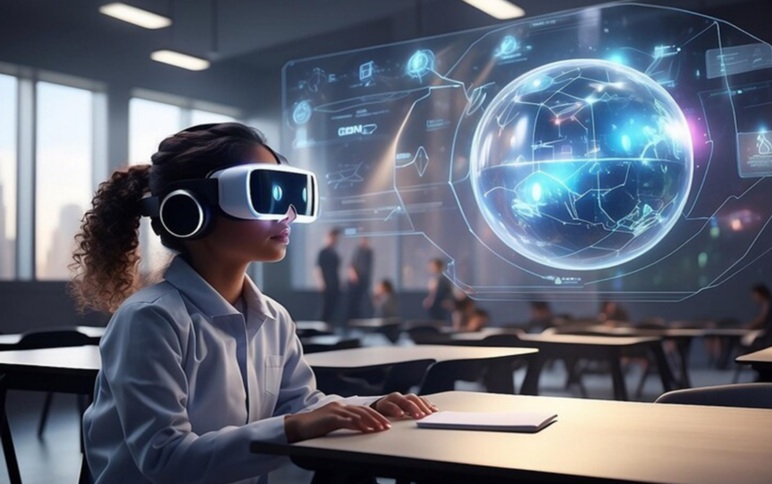How Tech Innovation is Transforming Education?

Technological innovation is changing the shape of education, offering both challenges and opportunities. This shift affects every aspect of learning. It changes teaching methods and student experiences. Let’s look at the key tools and methodologies facilitating this transformation. We will also see how they are modernizing education. These advances improve the transfer and absorption of knowledge.

Personalized learning
eSports platforms are online hubs specifically designed to promote and support competitive gaming events, tournaments, and community engagement in the eSports industry. These platforms serve as digital arenas where players, teams, organizers, and fans come together to participate in and follow eSports competitions across various video game titles.
Adaptive learning technologies
Adaptive learning technology customizes learning materials based on student performance. This ensures that assignments are appropriate to their current skill level. This personalization supports an ideal learning curve and helps students avoid feeling overwhelmed and losing interest. Moreover, using a report writing service for students’ academic needs makes a significant contribution to the learning process. It helps students write detailed reports about their achievements, which contributes to a deeper understanding of educational material and improved academic skills. This makes the learning process more meaningful and focused.
Customization based on artificial intelligence
Artificial intelligence (AI) is changing the way we personalize education. Artificial intelligence systems analyze the learning patterns of each student. In this way, the learning content becomes tailored to the unique needs of the learner. This allows students to learn the material at their own pace, improving education quality. Statistics show that this approach can improve results by 30-40%. Compared to traditional teaching methods, this is a high figure. Additionally, 75% of students report higher levels of satisfaction with their learning experience. This happens through the use of personalized learning based on artificial intelligence. These results highlight the importance of integrating AI into educational processes. This contributes to better learning outcomes and increased student motivation.
Collaboration Tools
Collaboration tools have changed the educational landscape. Digital platforms such as Google Classroom and Microsoft Teams have redefined communication processes in schools and universities. These platforms help teachers interact with students. They help with assignment completion, feedback management, and online discussions. These tools help overcome geographic barriers and support collaborative learning environments. This makes the learning process more accessible and inclusive. They also promote deeper interaction and knowledge sharing. This approach generally improves the quality of education.
Cloud computing makes storing and using educational resources convenient. Students and teachers can now access a wealth of information and applications and use them wherever they are, ensuring flexible and inclusive learning.
The main benefits of cloud computing include:
- Availability. Materials are accessible from anywhere in the world.
- Sharing. Many users can use and edit learning resources.
- Cost-effective. There is a reduction in costs for the buy and maintenance of technical equipment.
- Security. Advanced encryption and backup methods protect user data.
These innovations open up new learning opportunities. They make it more convenient, efficient and accessible for everyone.
Interactive learning environment

In the interactive learning environment, significant changes occur in the educational process. This is happening thanks to virtual reality and gamification.
Virtual reality (VR) offers revolutionary opportunities in education. Students will be able to immerse themselves in historical eras. They can explore distant planets and complex biological systems. And feel yourself in this environment. This immersion deepens understanding of academic subjects. After all, before, information was available only through text and illustrations in textbooks. Virtual reality brings learning to life, engaging students and increasing interest and efficiency. This innovation transforms traditional learning into a dynamic, interactive experience. As students become immersed in the material, their motivation increases, changing education.
Gamification uses elements of game design in an educational environment. This helps increase student engagement and motivation. The inclusion of grades, leaderboards, and achievement badges makes learning fun. This approach not only makes learning fun, but it also encourages healthy competition among students.
Key benefits of interactive learning:
- Increased attention. Interactive methods support and stimulate learning interest.
- Improved learning. Students better remember information received through interactive practices.
- Active participation. Students become more involved in the learning process, which increases their educational potential.
- Problem Solving Skills. Interactive methods train students to solve complex and multifaceted problems.
Data-driven analytics
Using big data in education
Big data is changing education by providing information that improves teaching methods. By examining large data sets, educational institutions can identify successful teaching practices. It also helps predict student outcomes and develop superior educational strategies. This analytical power allows schools and universities to tailor their curriculum. In this way, they better meet the needs of students. And learning becomes more personalized and effective. As a result, big data is moving beyond its role as a monitoring tool. This provides a richer and more personalized educational experience. This improves both the effectiveness of teaching and the depth of learning. Thus, education is moving towards more targeted and effective results.
Feedback and continuous improvement
Today, there are continuous feedback mechanisms based on modern technologies. This provides teachers with real information about students’ understanding and progress. This instant feedback allows teachers to adapt their teaching methods, which makes the process more efficient and responsive to the needs of students. This approach is especially important when writing essays, where immediate comments can improve the quality of the work. This helps students develop critical thinking and argumentation skills. This way, teachers can pinpoint which aspects need further explanation or reinforcement, which ensures deeper and more meaningful teaching of subjects.
Conclusion
Technology is revolutionizing education. Virtual reality and AI-powered personalization have breathed new life into learning. They made it more fun and adaptable. These innovations guarantee more than improvement. This is a revolution in educational practice. As the role of technology expands, the prospects for education become brighter. They open up endless opportunities for development. Accepting this change is critical. It prepares students for a changing world. Every advance in technology promises a leap in the way we teach, which makes learning even more effective and fun.
COMPARE GAME KEY PRICES AND SAVE MONEY ON ALLKEYSHOP
Download the Allkeyshop Browser Extension Free – SAVE MONEY
For all the latest video game news, trailers, and best deals, make sure to bookmark us.
You can find all the best and cheapest online deals on CD keys, game codes, gift cards, and antivirus software from the verified CD key sellers on our store pages.
To not miss any news on Allkeyshop, subscribe on Google News.
By  Daniel
Daniel
MORE RELEVANT ARTICLES



















